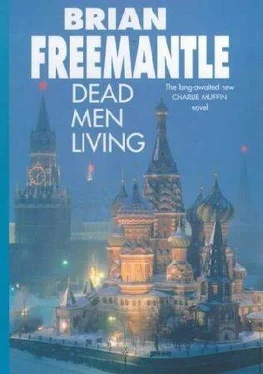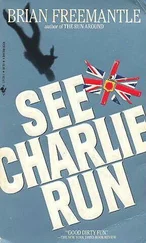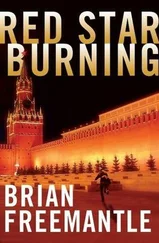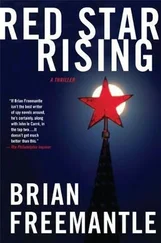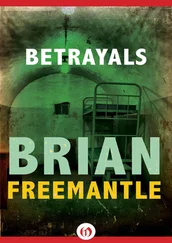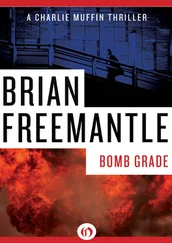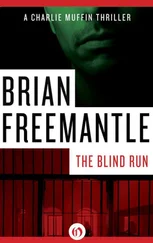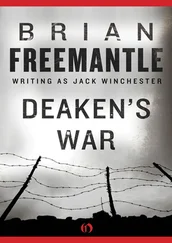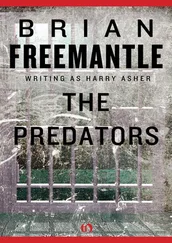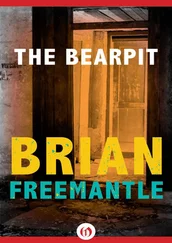Brian Freemantle - Dead Men Living
Здесь есть возможность читать онлайн «Brian Freemantle - Dead Men Living» весь текст электронной книги совершенно бесплатно (целиком полную версию без сокращений). В некоторых случаях можно слушать аудио, скачать через торрент в формате fb2 и присутствует краткое содержание. Жанр: Шпионский детектив, на английском языке. Описание произведения, (предисловие) а так же отзывы посетителей доступны на портале библиотеки ЛибКат.
- Название:Dead Men Living
- Автор:
- Жанр:
- Год:неизвестен
- ISBN:нет данных
- Рейтинг книги:4 / 5. Голосов: 1
-
Избранное:Добавить в избранное
- Отзывы:
-
Ваша оценка:
- 80
- 1
- 2
- 3
- 4
- 5
Dead Men Living: краткое содержание, описание и аннотация
Предлагаем к чтению аннотацию, описание, краткое содержание или предисловие (зависит от того, что написал сам автор книги «Dead Men Living»). Если вы не нашли необходимую информацию о книге — напишите в комментариях, мы постараемся отыскать её.
Dead Men Living — читать онлайн бесплатно полную книгу (весь текст) целиком
Ниже представлен текст книги, разбитый по страницам. Система сохранения места последней прочитанной страницы, позволяет с удобством читать онлайн бесплатно книгу «Dead Men Living», без необходимости каждый раз заново искать на чём Вы остановились. Поставьте закладку, и сможете в любой момент перейти на страницу, на которой закончили чтение.
Интервал:
Закладка:
There were murmurs and shuffles of agreement from men anxious to get out of the room. Ryabov, eager to establish a working procedure, said, “It’ll be their case, though. Has to be.”
“We don’t know what anything has to be, until we find out what happened, whenever it happened,” disputed Polyakov. Officiously, making it a government order, he said, “We wait. I’ll decide if and when Moscow is informed. And I’ll do it personally.”
Asshole, thought Ryabov. He said, “I’ve checked with wartime photographs. They’re definitely English and American uniforms. Officers, too.”
“What about the woman?” asked someone unseen, from the cabinet group.
“Civilian clothes,” said Ryabov, unnecessarily, because the still fully clothed woman was lying on a trolley next to the momentarily unneeded freezer drawers. “But they look Russian to me. So does she. Slavic.”
“This is an opportunity to bring world attention to what Stalin and the bastards who followed him did to their own people,” decided Polyakov, an idea hardening in his mind. “We’re going to use this for all it’s worth. Embarrass Moscow. They’re still pillaging our country, for what’s in the ground.”
“Let’s hope it was Moscow who had them killed all those years ago,” said Kurshin, emboldened by the vodka he’d drunk before the visit.
Novikov listened uncomfortably, unsure after all if the murders would be the chance for which he’d hoped. The more he’d thought about it, the more determined he’d become to make it so, but he couldn’t achieve it if the intention was positive obstruction and embarrassment. He wanted friends, not enemies.
Novikov began the autopsies later that evening, starting with the Englishman because the body’s outstretched arm had made it more convenient to put upon the examination table when they’d first arrived. Again-as he did subsequently with the American and the woman-he exhausted an entire roll of film photographing the body from every conceivable angle, reloading in readiness to record the dissection before physically touching the body. From both his father’s tuition and the stolen guidance manuals, he knew it wouldhave been professionally acceptable to cut the uniform away, but he had heard of incredible advances in forensic science-DNA, for instance, which he only vaguely understood-and used the empty threat of dismissal to force the two mortuary attendants, his only assistants, to help him lift and maneuver all three bodies to strip the clothes away intact.
Having done that, he left the naked body on the slab to go through each item of clothing, stopping painstakingly to itemize by hand each article he found. From the Englishman, in total, there was twenty British sterling, in notes and ten coins; 100 German war-script marks and $43, both currencies all in notes; a gold watch with a worn leather strap, the hands stopped at 12:43; a gold cigarette case containing six American Camel cigarettes and engraved with an inscription in Roman lettering that Novikov could not understand; a cigarette lighter, uninscribed; four keys, one designated by a twist of red cotton around its shank; a British-made Parker fountain pen, the ink inside still frozen; and a tie pin in the shape of a bayonet. The pin was still in a plain, army-issue tie, but the tie itself was snapped, close to the neck.
The clothes consisted of brown leather shoes, showing little sign of wear; army-issue cotton socks; cotton singlet vest with half-thigh-length underpants; starch-collared khaki shirt, the top four buttons undone, with two missing but already found lodged at the waist during the undressing; and a well-tailored khaki officer’s uniform, around the jacket of which there was what Novikov described in his notes as a leather harness, a belt encircling the waist of the jacket, which continued to midthigh, with another leather strap looped over the man’s right shoulder to be joined, front and back, to the waist belt at the left. There was brass shoulder insignia, which Novikov noted, although he was not able to identify the denoted rank. All the clothes were so perfectly preserved that Novikov thought that with cleaning-the brass buttons and leather polished-everything would have been wearable again.
The body was that of a blond-haired, well-nourished male Caucasian, approximately thirty years old. From its condition the man could have died that day. Novikov concentrated upon the obvious cause of death. At least half the cranial casing had been lost, a considerable amount driven into the brain pulp. It was easier than Novikovexpected to extract the single bullet, which had entered in a downward trajectory and lodged at the Atlas vertebra at the spinal tip. The pathologist had no forensic ballistic knowledge or experience, but the bullet looked quite large and appeared reasonably intact. There were minor facial abrasions, dark with after-death lividity, and there was a lividity burn around at the rear of the neck. Apart from that there was no body wound. The wrists and ankles were bruised, predeath, indicating the man had been tightly bound.
He sawed into the sternum, continuing the chest opening to the man’s pelvis, and braced the rib cage apart. Novikov extensively photographed the exposed organs before examining each intently. None looked enlarged or diseased. Finally, still working downward, he extracted and weighed the heart, aorta, both lungs, the thymus, stomach, liver, gallbladder, pancreas, spleen, both kidneys, both adrenaline glands, bladder, prostate and urethra. Having done that, he returned to the skull and removed, weighed and preserved what remained of the cerebrum and cerebellum, inserting a pencil to show the trajectory of the wound on the photographs.
Only when he finished did Novikov remember the manual guidance about stomach contents and remove enough to discover it contained a largely undigested meal: even without using his microscope, the mirror of which was tarnished, Novikov identified meat and what looked like cheese. He had actually to consult the manual to learn that stomach evidence should not be preserved in formaldehyde. He immersed everything else, carefully labeling each jar as he did so. Without a name, he used the believed nationality. Again following the manual, he took fingernail scrapings, which just looked like dirt but which he fixed onto a microscope slide.
It was at that moment he remembered he hadn’t weighed the body intact, which he should have done. He weighed it anyway, adding the minimal additions of the now-removed organs. After doing that, he took height and body measurements, something else he should have done at the outset. An inevitable second, more accurate autopsy, with better equipment, would probably pick up his error.
He didn’t make it on either of the other two bodies. He chose that of the believed American next. The uniform was similar to the first, without the leather harness. Again it was all army-issue, cotton socks, boxer shorts underwear and singlet. The tie was completely missingand the three top buttons of the shirt unfastened. The tunic jacket again had shoulder ranking designation, which Novikov noted.
There was a silver-cased, khaki-strapped wristwatch which Novikov took to be army-issue, stopped at 1:20, and a silver ring surmounted by a large red stone on the small finger of his left hand. The pocket of the uniform contained $75 in notes and twenty-five cents in coin and 100 war-script D-marks; five keys in a flat leather case, none with any identification; a small, ivory-handled penknife; a pocket magnifying glass with what appeared to be a matching set of tweezers; a Zippo lighter but no cigarettes or cigarette case; a silver propelling pencil; and a packet of Juicy Fruit chewing gum, with two sticks missing.
The body was again that of a well-nourished male Caucasian, age about thirty-five. The fatal wound was once more to the back of the head but more to its right than that of the first victim. Less cranial bone had been shattered. It was again comparatively easy to recover the bullet, the trajectory of which had taken it from the right to the left of the man’s skull and been slightly more damaged by impact against the rear teeth to the left of the jaw. There was a lividity burn almost completely around the neck. Novikov made the same gullet-to-crotch opening, broke open the rib cage and this time used the man’s own magnifying glass to examine each of the organs, none of which showed any indication of damage or disease. He patiently went through the same weighing and preserving process, once more leaving the brain until last. Again, for the photographs, he marked the trajectory with a pencil. There was undigested vegetable matter as well as meat among the stomach contents. There didn’t seem to be debris beneath the man’s fingernails, but Novikov made scrape slides. He continued using the supposed nationality to identify his specimen jars.
Читать дальшеИнтервал:
Закладка:
Похожие книги на «Dead Men Living»
Представляем Вашему вниманию похожие книги на «Dead Men Living» списком для выбора. Мы отобрали схожую по названию и смыслу литературу в надежде предоставить читателям больше вариантов отыскать новые, интересные, ещё непрочитанные произведения.
Обсуждение, отзывы о книге «Dead Men Living» и просто собственные мнения читателей. Оставьте ваши комментарии, напишите, что Вы думаете о произведении, его смысле или главных героях. Укажите что конкретно понравилось, а что нет, и почему Вы так считаете.
